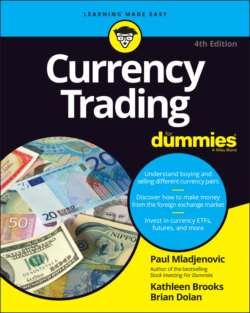Читать книгу Currency Trading For Dummies - Kathleen Brooks - Страница 43
Oil
ОглавлениеA lot of misinformation exists on the internet about the supposed relationship between oil and the USD or other currencies, such as CAD, NOK (Norwegian krone), or JPY. The idea is that, because some countries are oil producers, their currencies are positively (or negatively) affected by increases (or decreases) in the price of oil. If the country is an importer of oil, the theory goes, its currency will be hurt (or helped) by higher (or lower) oil prices.
Correlation studies show no appreciable relationships to that effect, especially in the short run, which is where most currency trading is focused. When there is a long-term relationship, it’s as evident against the USD as much as, or more than, any individual currency, whether an importer or exporter of black gold.
The best way to look at oil is as an inflation input and as a limiting factor on overall economic growth. The higher the price of oil, the higher inflation is likely to be and the slower an economy is likely to grow. The lower the price of oil, the lower inflationary pressures are likely (but not necessarily) to be. Because the United States is a heavily energy-dependent economy and also intensely consumer-driven, the United States typically stands to lose the most from higher oil prices and to gain the most from lower oil prices. We like to factor changes in the price of oil into our inflation and growth expectations, and then draw conclusions about the course of the USD from them (see Chapter 7). Above all, oil is just one input among many.
